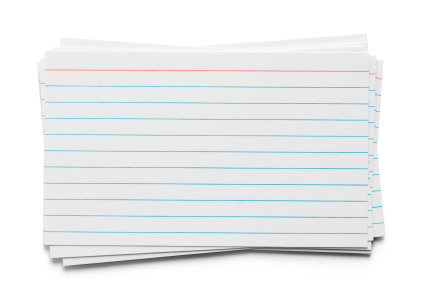Should you write for clickers or scrollers online?
My favorite piece of advice for determining the length of a web page came from friend and fellow writing coach Jeff Herrington: “Think index cards, not toilet paper.”

In other words: Write more shorter pages.
Indeed, writing more shorter web pages has long been the rule of thumb for content length. But does this guideline still make sense? Should we write more shorter pages for clickers? Or fewer longer pages for scrollers?
In other words, should you write index cards or toilet paper?
Laptops, desktops: index cards
That original best practice of creating more shorter web pages was based on research showing that readers:
- Pay more attention to the copy above the fold. People spend 74% of their viewing time on the first two screens, according to 2018 research by the Nielsen Norman Group. What if they never make it to your call to action? To get more of your website’s copy above the fold, create more shorter pages.
- Find what they’re looking for faster, according to research by D. Dee-Lucas. That’s important. Because 96% of the time, according to a Xerox Parc study, visitors come to your website looking for specific information.
- Read faster, understand better, remember longer and enjoy more with more shorter web pages. In fact, shorter pieces in general are more effective, according to 130 years of readability research.
But then, something happened that made fewer longer pages more appealing: More people started visiting web pages on their phones.
Mobile: toilet paper
Today, more than half of your audience members visit your web pages via mobile, not their computer screens. The obstacles of using those tiny screens has changed the way people read web pages:
- Single-bar syndrome. Every click counts on mobile. Waiting for web pages to loooooooaaaaaaaddddd on poor Wi-Fi is one reason people click less often on mobile.
- Fat finger disorder. You know how hard it is to tap buttons, links and other touch targets precisely on your phone. That’s another reason people click less often on mobile. It’s especially irritating to loooooooaaaaaaaddddd a web page that you didn’t intend to visit.
- Search engine preferences. Call it a virtuous circle: The more words on a web page, the more search terms Google can index for. The more people find your page via Google and visit, the more Google loves you.
In this environment, fewer longer pages may work best. For mobile, scrolling is often preferable to clicking.
So what’s the best web page length?
That depends.
When writing more shorter pieces for websites, emails and blog posts and other social media:
- Write in complete chunks. That is, every web page should have a beginning, middle and end — but not more than one beginning, middle and end.
- Think context independent, self contained. Instead of coming up with an arbitrary word length for each web page, make sure each page stands on its own.
- Chunk, don’t chop. That is: 1) Chunk copy into logical, not arbitrary, sections. 2) Break those sections up into separate web pages. 3) Connect those web pages with hyperlinks. Don’t break copy up just to be breaking it up.
When writing fewer longer pieces for websites, emails and blog posts:
- Keep it short. Mobile visitors might not want to click, but they don’t want to scroll forever, either.
“Even a 500-word story looks long on mobile,” counsels the BBC in its guide to writing news for the mobile screen.
Or, as usability expert Jakob Nielsen says, “Short is too long for mobile.”
- Show them what’s below the fold. Offer a menu on mobile to get visitors beyond the second screen.
- Let web design help. Design for scrolling. Avoid false bottoms. Make it scannable. And don’t forget white space.

Leave a Reply